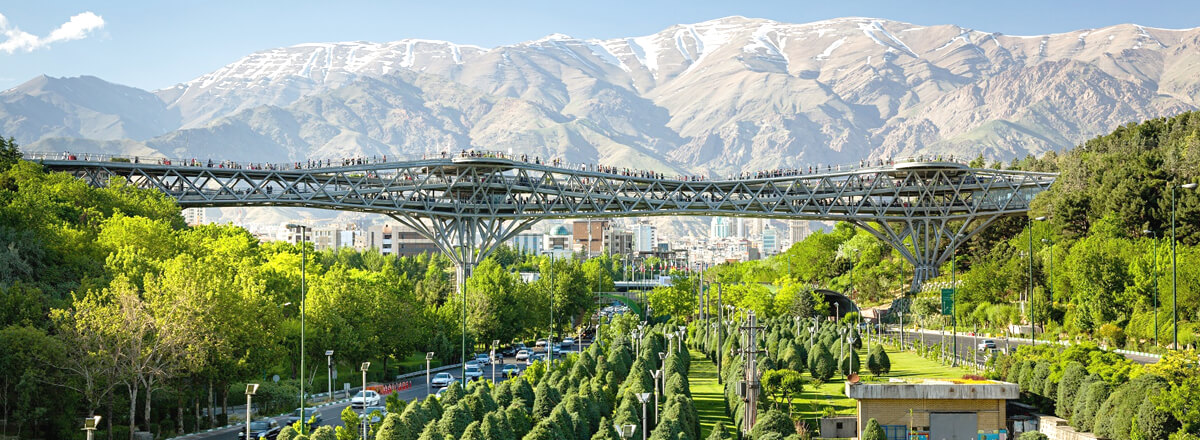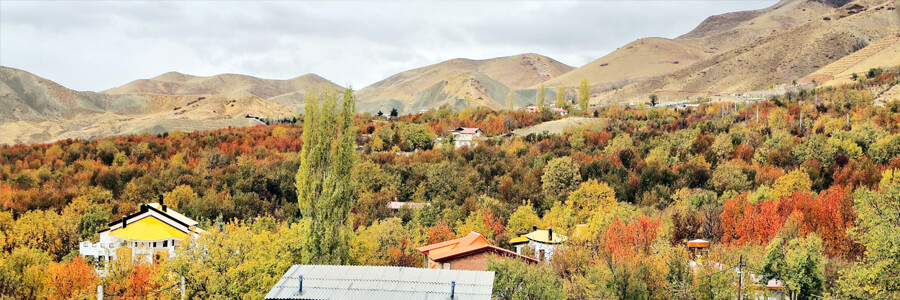Tehran Province (Ostaan-e Tehran) is located to the north of the central plateau of Iran. The province of Tehran has over 15 million inhabitants and is Iran's most densely populated region. Approximately 84.15% reside in urban areas and 15.85% in rural areas of the province. This province has common borders with the Mazandaran province from north, Qom province from south, Semnan province from east and Qazvin province from west.

Golestan Palace
The province of Tehran has 12,147,543 inhabitants and is Iran's most densely populated region. Approximately 86.5% reside in urban areas and 13.5% in rural areas of the province.The province gained importance when Tehran was claimed the capital by the Qajar dynasty in 1778. Today, Tehran, with a population of 15 million, is ranked amongst the 40 most populous metropolitan cities of the world.

Azadi Square
Tehran is the commercial heart of Iran and has more than 17,000 industrial units which is about 26% of all units in Iran. The province contains almost 30% of Iran's economy, and comprises 40% of Iran's consumer market.

Tuchal Complex (Tochal Ski Resort)
The highest point of the province is Mount Damavand at an elevation of 5,678 m, and the lowest point of the province being the plains of Varamin, 790 m above sea level. Mountain ranges such as The Alborz span the north; Savad Kooh and Firooz Kooh are located in the north east; Lavasanat, Qarah Daq, Shemiranat, Hassan Abad and Namak Mountains are in the southern areas; Bibi Shahr Banoo and Alqadr are situated in the south east and the heights of Qasr-e-Firoozeh being located to the east of the province.

Shah Abdolazim in Shahr-e-Rey
Tehran Province has several archeological sites indicating settlements dating back several thousand years. Until 300 years ago, Shahr-e Rey was the most prominent of the cities of the province. However, the city of Tehran rose to become the larger city and capital of Iran by 1778, and since then has been the political, cultural, economic, and commercial nucleus of Iran.

Milad Tower
Tehran has over 1,500 historical sites of cultural significance registered with the Cultural Heritage Organization of Iran. The oldest of these in Tehran province are the remains of two sites in Firuzkuh County that date back to the 4th millennium BCE.

Hassan-Abad Square
The climate of Tehran province in the southern areas is warm and dry, but in the mountain vicinity is cold and semi-humid, and in the higher regions is cold with long winters. The hottest months of the year are from mid-July to mid-September when temperatures range from 28°-35° C and the coldest months experience 7° to -5 C around December-January. Tehran city has moderate winters and hot summers. Average annual rainfall is approximately 400 mm, the maximum being during the winter season.

The metropolis of Tehran is the capital city of IRAN
Since the city of Tehran designated as the capital of Iran by 1778 it has rose to become the largest city and cultural, economical center of Iran as well. During the past 200 years it has been home to many reputed scholars, writers, poets and artists, both those who have lived and those who are born in Tehran.

Tabiat Bridge

Lavasan near Tehran

Chitgar Lake











